Mera Peak, standing tall at 6,476m, is a coveted summit for aspiring mountaineers in Nepal’s Sagarmatha region. This exhilarating 15-day expedition blends moderate technical challenges with breathtaking vistas of iconic peaks like Everest and Lhotse. Participants embark on a well-structured journey, benefitting from proper acclimatization and the expertise of seasoned guides. As trekkers navigate stunning landscapes and enjoy local Sherpa culture, they create unforgettable memories – but the true test lies in the final push to the summit, where the rewards of their efforts will be truly revealed.
Key Points
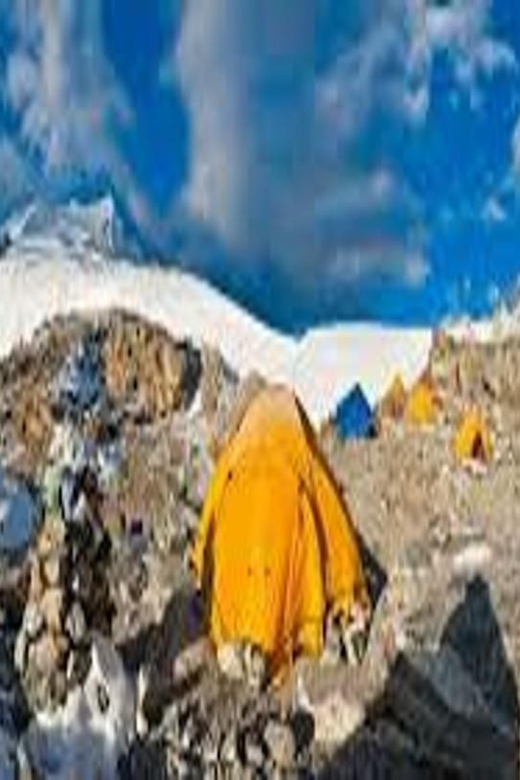
- Mera Peak is a popular 6,476m mountain in Nepal’s Sagarmatha region, suitable for mountaineering enthusiasts with moderate training.
- The 15-day expedition includes trekking through scenic Himalayan landscapes and a summit attempt on the north face.
- Proper acclimatization, technical climbing skills, and high-altitude experience are essential for a successful and safe climb.
- The expedition includes flights, permits, guide support, meals, and accommodations, with personal costs for equipment and insurance.
- Climbing Mera Peak offers the opportunity to immerse in Sherpa culture and enjoy panoramic views of major Himalayan peaks.
Overview of Mera Peak
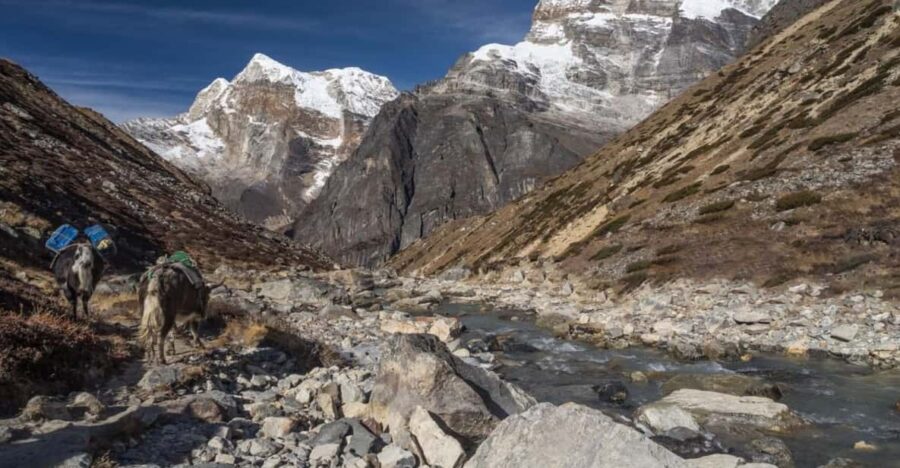
Mera Peak (6,476m) is located in the Sagarmatha region, renowned for its divine beauty and serenity.
It’s the most climbed peak in Nepal, making it ideal for explorers interested in mountaineering. The journey lasts 15 days, including 3 days of travel and 12 days of trekking. Adventurers begin and end their trek in Lukla, a town accessible via a 30-minute flight from Kathmandu.
Mera Peak’s allure lies in the panoramic views it offers of some of the world’s highest peaks, including Everest, Lhotse, Cho Oyu, Kanchenjunga, and Makalu.
You can also read our reviews of more tours and experiences in Lukla.
Climbing Experience and Requirements
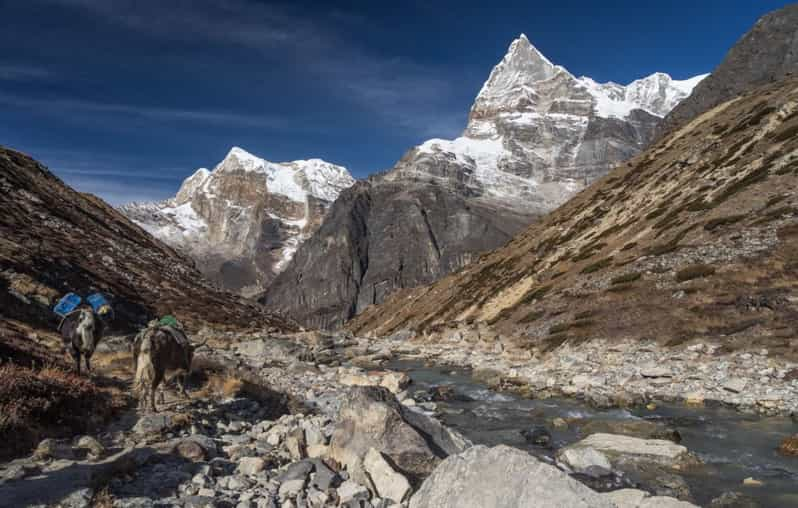
The climb is suitable for individuals with moderate mountaineering training.
Highlights of the trek include reaching Mera Peak’s summit and witnessing panoramic views of some of the world’s highest mountains, such as Everest, Lhotse, Cho Oyu, Kanchenjunga, and Makalu.
The standard route is from the north, while the south and west faces are more technical.
Mountaineers should be prepared for vertical climbing and high-altitude glacier walking.
With the right skill set and proper acclimatization, adventurers can embark on this challenging yet rewarding expedition to the top of Mera Peak, one of Nepal’s most popular climbing destinations.
Itinerary Breakdown
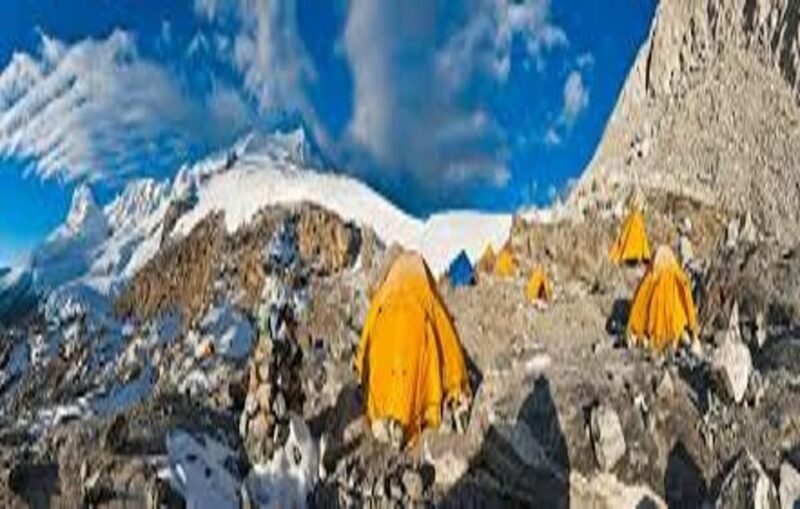
The itinerary for this Mera Peak climbing expedition spans 15 days, including 3 days of travel and 12 days of trekking.
It starts with arrival in Kathmandu, followed by a preparation day. Then, a flight to Lukla leads to a trek to Chutenga on day 3.
Over the next few days, the trek progresses through Chatrabu, Kothe, and Thagnak, with an acclimatization day at Thanak.
The climb then continues to Khare, Mera La, and Mera High Camp before the summit attempt on day 11.
The return follows a similar route, with overnight stays at Kothe, Chatrabu, and Lukla before the final flight back to Kathmandu.
Inclusions and Costs
The expedition’s price starts from €2,845.15 per person, with options for free cancellation up to 24 hours in advance.
This includes two nights in a deluxe hotel in Kathmandu, flights between Kathmandu and Lukla, a special climbing peak permit, one climbing guide per two members, Everest National Park entrance permit, ground transport, meals during the trek, accommodation, porters (15-18 kg per porter), accident insurance for staff, and a trekking/climbing map.
Personal costs include climbing equipment ($150 per person), personal accident insurance, emergency evacuation costs, oxygen, medical supplies, alcoholic beverages, laundry, and tips.
Extra night accommodations and sightseeing tours in Kathmandu are available upon request.
More Great Thing To Do NearbyLogistics and Accommodation
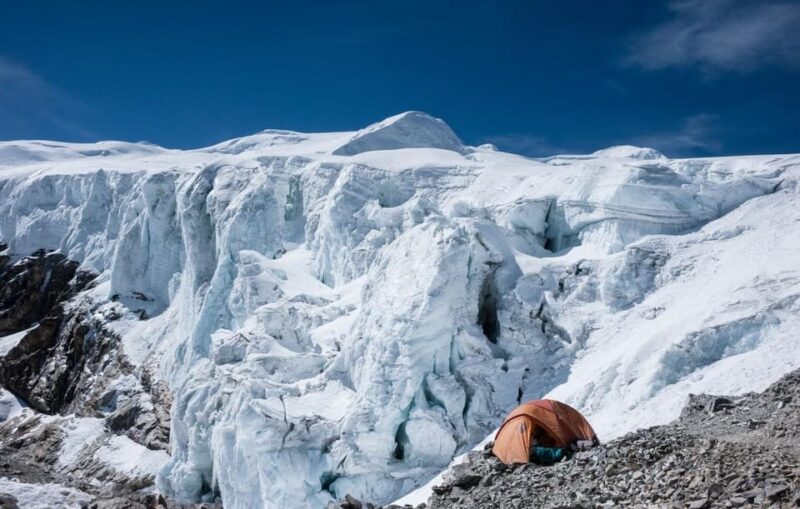
Participants’ journey to Mera Peak begins with a 30-minute flight from Kathmandu to Lukla, the starting point of the trek.
From there, the adventure unfolds over 12 days of trekking through the Sagarmatha region.
Accommodation throughout the trek is in basic lodges, known as teahouses, which provide simple but comfortable rooms and meals.
At the higher camps, such as Khare and Mera High Camp, climbers will stay in tents provided by the tour operators.
The camping gear, including cooking equipment and food, is carried by porters, allowing participants to focus on the physical and mental challenges of the climb.
With a maximum group size of 12, the experience ensures personalized support throughout the expedition.
Safety and Preparation
Safety and preparation are paramount when embarking on a Mera Peak climbing expedition. Climbers must be in excellent physical condition, with prior experience in high-altitude trekking and mountaineering. Proper acclimatization is crucial to mitigate the risks of altitude sickness.
Climbers should have technical skills in glacier traversal, ice axe use, and rope handling. All necessary equipment, including sturdy boots, warm clothing, and climbing gear, must be meticulously checked. A well-trained guide and porter support are essential, as they provide expertise, navigation, and assistance throughout the journey.
Comprehensive travel insurance with emergency evacuation coverage is also highly recommended. By prioritizing safety and thorough preparation, climbers can maximize their chances of a successful and rewarding Mera Peak ascent.
Cultural Immersion
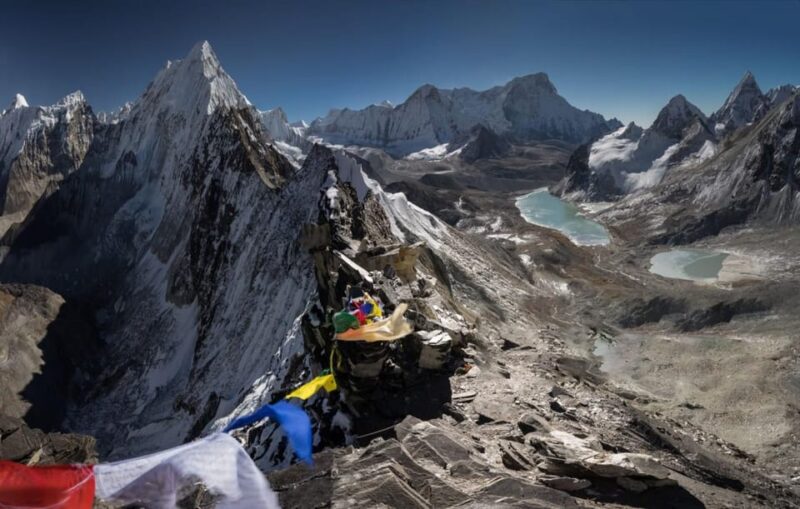
A unique aspect of the Mera Peak climbing experience is the culture it offers participants. As they trek through the Sagarmatha region, climbers have the opportunity to interact with the local Sherpa communities and learn about their rich cultural heritage.
This includes:
- Visiting traditional Sherpa villages and observing their daily life and customs.
- Experiencing local cuisine and trying authentic Nepali dishes.
- Attending cultural performances and learning about the region’s spiritual traditions.
- Engaging in exchanges with Sherpa guides and porters, gaining insights into their mountaineering expertise and way of life.
This cultural exchange adds a meaningful dimension to the Mera Peak climbing adventure, allowing participants to enjoy the vibrant tapestry of Nepal’s mountain communities.
Why Choose Mera Peak
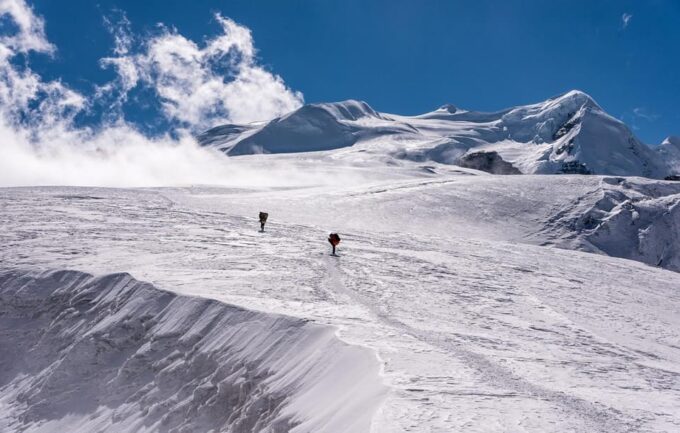
Mera Peak’s allure lies in its captivating combination of technical challenge and breathtaking scenery. As Nepal’s most-climbed peak, it offers adventurous trekkers the opportunity to conquer a 6,476-meter giant while basking in the glory of the Himalayan giants surrounding it. The climb presents a moderate level of difficulty, making it an ideal choice for those seeking a mountaineering experience without the extreme technical demands of higher peaks.
| Reasons to Choose Mera Peak | ||
|---|---|---|
| Panoramic Vistas | Moderate Difficulty | Popular Destination |
| Witness the grandeur of Everest, Lhotse, Cho Oyu, Kanchenjunga, and Makalu from the summit. | Suitable for climbers with basic mountaineering training. | Nepal’s most-climbed peak, attracting adventurous trekkers worldwide. |
Frequently Asked Questions
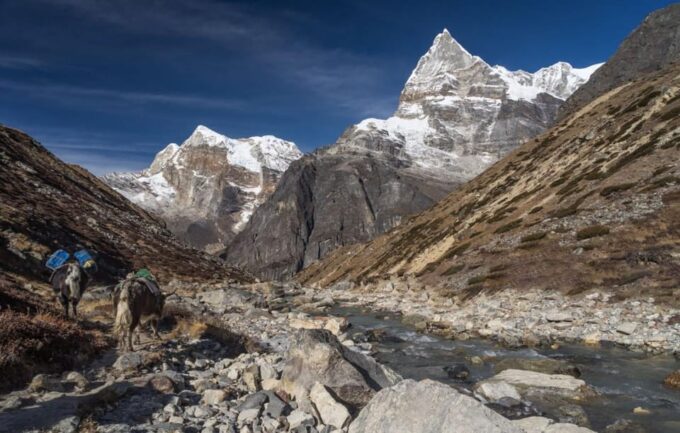
Is Previous Mountaineering Experience Required for This Expedition?
The expedition doesn’t require prior mountaineering experience, but it’s suitable for those with moderate training. Participants will learn glacier walking and vertical climbing techniques during the trek, making it accessible for adventurous trekkers.
What Is the Average Group Size for Mera Peak Climbing?
The average group size for Mera Peak climbing expeditions is typically 4-8 participants. This allows for a personalized experience while maintaining the logistical efficiency needed for a successful high-altitude climb.
Can I Extend My Stay in Nepal After the Expedition?
Participants can extend their stay in Nepal after the Mera Peak expedition. Extra night accommodations and sightseeing tours in Kathmandu are available upon request, allowing travelers to explore the country further.
Are There Any Age Restrictions for Participating in This Climb?
There are no strict age restrictions for the Mera Peak climb, but participants should be in good physical condition and have previous mountaineering experience. Older climbers may require additional training and acclimatization to safely attempt this challenging high-altitude expedition.
What Is the Typical Weather Like During the Climbing Season?
The climbing season for Mera Peak is generally from April to October. During this time, the weather’s typically dry and sunny, with temperatures ranging from -10°C at high camps to 15°C at lower elevations. Occasional snowfall may occur at higher altitudes.
Recap
Mera Peak climbing offers an unparalleled mountaineering adventure. Trekkers will conquer a 6,476m summit, enjoy breathtaking vistas, and enjoy Sherpa culture. With proper preparation and experienced guides, adventurers can achieve this remarkable feat and create lifelong memories. Mera Peak’s combination of technical challenge and natural splendor makes it a must-experience destination for any committed mountaineer.
You can check if your dates are available here:More Tour Reviews in Lukla
Not for you? Here's more things to do in Lukla we have recnetly reviewed
- 11 Best Helicopter Flights And Tours In Lukla
- 3 Best Private Car With Driver Services In Lukla
- 9 Best Tours In Lukla
- 7 Best Hiking And Trekking Tours In Lukla
- Everest Base Camp With Cho La & Renjo La Pass Trek – 19 Days
- Kathmandu: Everest Base Camp Helicopter Tour With Breakfast
- Everest Scenic Mountain Flight With Guaranteed Window Seat
- Everest Base Camp Trek
- Kathmandu: Mt. Everest Scenic Flight by Airplane
- Everest Base Camp Classic Trek
- Mera Peak Climbing
- Lukla to Kathmandu Flight Tickets for Everest Trekkers
